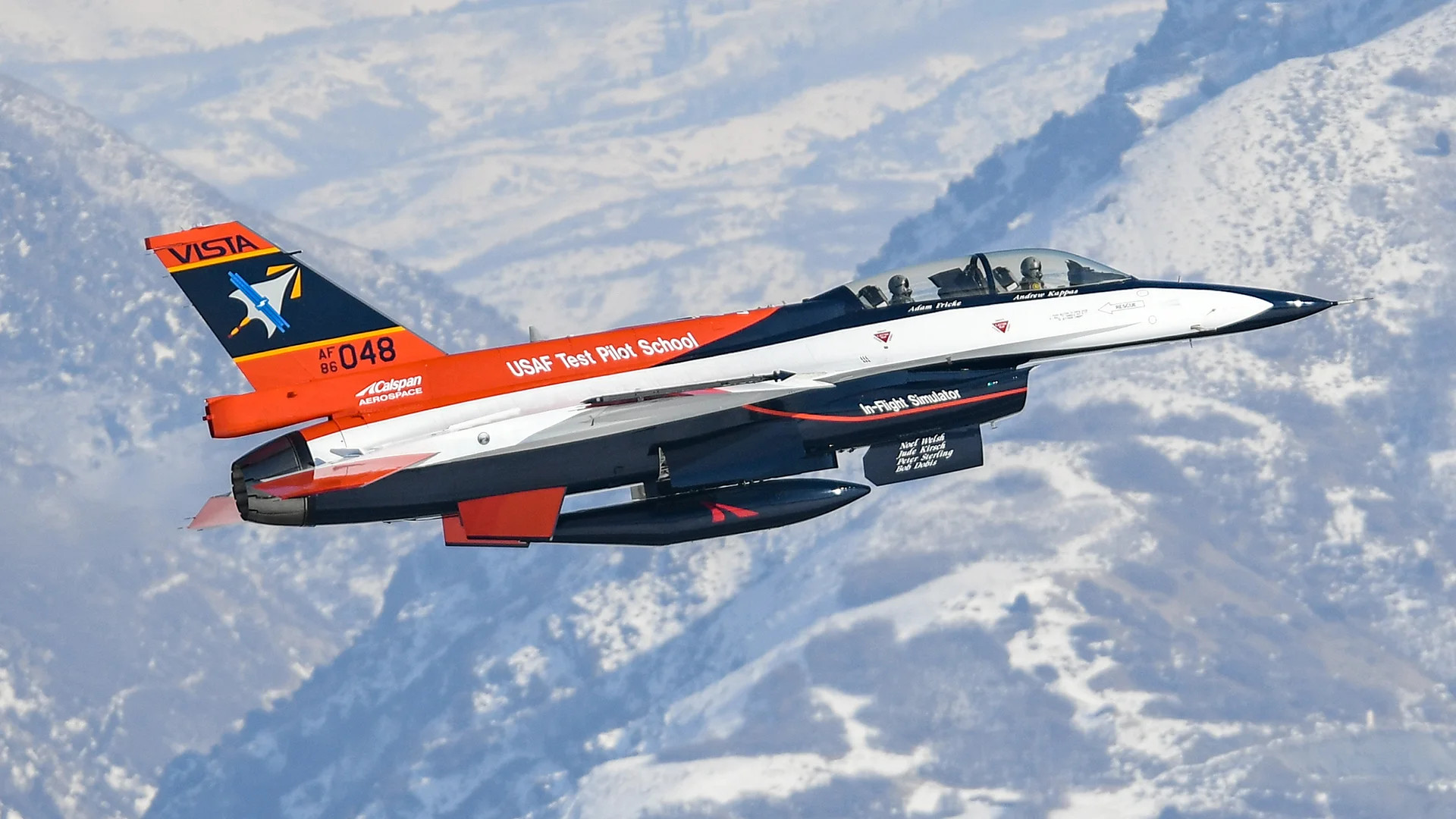Lockheed Martin Skunk Works has achieved a key milestone in integrating artificial intelligence (AI) with air combat operations, successfully demonstrating a crewed-uncrewed teaming mission.
The announcement, made on November 21, demonstrated how an airborne battle manager issued real-time commands to AI-controlled aircraft through a touchscreen pilot vehicle interface (PVI).
The project, carried out in collaboration with Lockheed Martin’s Demonstrations and Prototypes organization and the University of Iowa’s Operator Performance Laboratory (OPL), simulated a complex offensive counter-air mission.
In these flight tests, a human battle manager aboard an L-39 Albatros assigned targets to two AI-controlled L-29 Delfin jets. The AI-powered jets worked in tandem to neutralize two mock enemy aircraft using simulated mission systems and weapons.
This success builds on Skunk Works’ earlier efforts to test AI-driven autonomy for aerial missions. Earlier this year, in partnership with OPL, the team demonstrated the use of AI in air-to-air intercept scenarios.

They successfully conducted simulated-to-real transfer test objectives against a virtual adversary, showcasing AI’s offensive and defensive maneuvers capabilities.
In September 2023, the teams piloted Aero Vodochody L-29 aircraft as surrogates for uncrewed systems to demonstrate AI-directed jamming support during a simulated air-to-ground mission.
Meanwhile, Lockheed Martin stated that the latest tests represent a step forward in advancing AI mission performance in operationally realistic environments. By adhering to open mission systems standards, the company ensures compatibility and adaptability with various platforms.
This latest demonstration is the third test of its kind and the first to involve real-time human oversight of AI actions. It also builds on earlier experiments that showcased AI-controlled air-to-ground jamming.
Lockheed Martin views these advancements as critical for the future of air combat, where crewed and uncrewed systems will collaborate to execute intricate missions.
With AI commanding the planes’ autopilots and a human battle manager providing oversight, this milestone underscores the potential of human-AI collaboration in redefining aerial warfare strategies.
AI-Powered Aircraft Set To Transform US Air Force Operations
Artificial intelligence (AI) is emerging as one of the key breakthroughs in military aviation, rivaling the impact of stealth technology introduced in the 1990s. The US Air Force (USAF) is aggressively advancing this capability, aiming to field a fleet of more than 1,000 AI-enabled unmanned aircraft by 2028.
Multiple factors drive the transition to AI-powered systems, including heightened security concerns, cost-effectiveness, and the need for tactical advantages.
A major milestone in AI’s integration occurred last year when the X-62A, a modified F-16 test jet, operated autonomously in a landmark dogfight against a piloted F-16.
The X-62A, officially called the Variable-stability In-flight Simulator Test Aircraft (VISTA), has become an essential platform for testing cutting-edge technologies.
Its unique ability to mimic the flight characteristics of various aircraft enables it to serve as a surrogate for diverse experiments. Since 2022, DARPA, working with the Air Force and Lockheed Martin, has embedded machine-learning algorithms into the X-62A.

These AI “agents” successfully directed the aircraft during autonomous flight tests, a feat first achieved in late 2022 and publicly disclosed in early 2023.
Despite these advancements, concerns remain about the extent of AI autonomy, especially in scenarios involving lethal weapon use. Critics argue that allowing AI to make life-and-death decisions without adequate human oversight could lead to unintended consequences.
In response, USAF officials have assured that human operators will maintain ultimate authority in weapon deployment and ensure ethical safeguards are in place.
The USAF’s strategic shift toward unmanned systems is also influenced by budgetary constraints. The F-35 Joint Strike Fighter program has been hampered by production delays and escalating costs, now estimated at US$1.7 trillion.
AI-controlled aircraft offer a practical alternative to traditional fighter jets. Looking ahead, the USAF envisions swarms of unmanned aircraft conducting preemptive strikes against enemy defenses, creating safer and more effective pathways for crewed aircraft to follow.
This strategy minimizes risks to human pilots and provides a significant advantage in penetrating contested airspace.
The service consistently enhances AI mission performance in realistic simulated environments, utilizing open mission systems standards to guarantee wide compatibility and a swift transition to future platforms.
As the USAF advances its integration of AI, it is also seeking to balance innovation with responsibility to ensure these technologies are deployed ethically and strategically.
- Contact the author at ashishmichel(at)gmail.com
- Follow EurAsian Times on Google News




